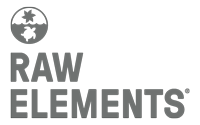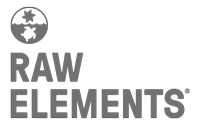Transparency and Accountability in Our Product Testing
To our Valued Customers,
Subject: Transparency and Accountability in Our Product Testing
We hope this letter finds you in good health and high spirits. At Raw Elements, our commitment to your well-being and satisfaction has always been at the forefront of everything we do. It is with this commitment in mind that we wish to address recent concerns related to the presence of benzene in our products.
In 2021, Valisure, an independent pharmacy that conducts comprehensive testing on various products, raised concerns regarding the presence of benzene in some sunscreen and after-sun care products in the US marketplace, including a couple of our Raw Elements formulas. We took these concerns very seriously and immediately initiated a thorough investigation into the matter as our ingredients should in no way have any association with Benzene.
As part of our response, we conducted a series of rigorous tests with a reputable third-party laboratory specializing in product safety analysis. The results of these tests were aimed at providing an accurate assessment of the benzene levels in our Raw Elements formulas. We are pleased to share the findings of these tests with you:

The “<” amounts indicate that Benzene was not detectable at the levels capable of being tested to. Also, for reference, 220 ug/kg is equivalent to 0.22 ppm, and 23.4 ug/kg is equivalent to 0.0234 ppm.
The results clearly indicate that the benzene levels in our products are significantly lower than the initial concerns raised by Valisure -- albeit with exceptions on batch 1 and 3 (which are no longer in the market). We understand that even trace amounts of certain substances can cause unease among our customers, and we want to assure you that even though these were two of the products found to contain low trace amounts with of Benzene, they have been thoroughly tested and confirmed to be are well within the safety limits established by regulatory authorities.
To provide further insight, we enlisted the expertise of an independent toxicologist, Michael Maynard, PhD, DABT, ERT, to assess the potential impact of the benzene levels found in these specific batches. Mr. Maynard’s evaluation confirms that the verified trace benzene levels are well below the thresholds considered safe for topical application. He emphasizes that the risk associated with these trace amounts of benzene is negligible and unlikely to cause any adverse effects in users. See report summary from Mr. Maynard below.
Risk Assessment for Benzene in Raw Elements Sunscreen Products
The manufacturer of Raw Elements brand sunscreen became aware that its sunscreen product may contain a low-level presence of benzene, which is not an intentionally added ingredient. Eight finished Raw Elements products were tested by K Prime Inc Laboratory and found the presence of benzene below the limit the of detection (1.5), 23.4 ug/kg (23.4 ppb), and the highest found was at 220 ug/kg (220 ppb)1 (Table 1).
This report analyzes the health effects and conducts a risk assessment for benzene at the highest level in the Raw Elements sunscreen products. The benzene in the highest affected spray sunscreen product at 220 ug/kg was assessed for human health concern. For cancer assessment the California OEHHA standard was used because it is considered one of the most conservative. That standard determined the safe harbor exposure level NSRL (No Significant Risk Level) of benzene is 6.4 ug/day by oral exposure for a lifetime (70 year) exposure. The NSRL is defined as the “levels of exposure calculated to result in no more than one excess case of cancer in an exposed population of 100,000, assuming exposure over a 70‐year lifetime (10–5 lifetime risk of cancer)” (OEHHA, 1989). The safe harbor level was conservatively estimated from the lowest level of benzene potentially causing carcinogenicity or reproductive toxicity from animal and human studies.
In this assessment, the cancer assessment was conducted using the NSRL for oral safe harbor value since the oral value would be more conservative assessment as the oral absorption is almost 100 times greater than the dermal absorption for benzene With a safe harbor NSRL level for benzene of 6.4 ug/day for 70 years lifetime, when divided by 60 kg weight for an adult female, the value is 6.4 ug/day divided by 60 kg or 0.107 ug/kg/day. This calculation is conducted to put the NSRL units in the same format as the exposure value and used for margin of safety calculations shown below.
For the exposure of the 220 ug/kg level of benzene in the sunscreen product (highest level) an exposure assessment model was run to calculate the total amount from a dermal exposure of a conservative use of a sunscreen product containing 220 ug/kg benzene. The dermal exposure value of the worst-case level of benzene was compared to the oral NSRL safe harbor levels. If the worst-case benzene level in the Raw Elements products was considered safe, then lower levels would also be considered safe.
The exposure model used is known as ConsExpo 4.1 and is freely available and accepted by both United States and global regulators, and scientific agencies. For a 220 ug/kg (220 ppb) level in the sunscreen product, the benzene fraction in the product would be 0.220 ug/g or ppm and 0.220 ppm is 0.000022% or as a fraction of the commercial product, 0.00000022 (2.2E-7)
The other standard parameters used in the model are shown in Table 2. Some of the major parameters used include 800 applications per year for a 70-year lifetime, application to 60, 20 or 9 kg body with bathing suit, absorption amount by skin, etc.
These standard parameters are well established, conservative, and recommended by FDA, EPA, EU SCCS, RIFM, and other global agencies. The dermal exposure for a product containing 0.22 ppm of benzene was calculated by the conservative model for a 60 kg adult as 1.13E-6 mg/kg/day or 0.00113 ug/kg/day for 70 years. The exposure levels of benzene determined by the conservative exposure model will be compared to the oral NSRL safe harbor levels, and a margin of safety calculated. The margin of safety of benzene is calculated as the level of the benzene’s safe harbor value (carcinogenicity NSRLs in this case) for a lifetime exposure period divided by the calculated lifetime exposure level. If the resulting quotient is greater than 1, then the exposure is considered to not cause risk of harm for carcinogenicity because the exposure level is less than the safe harbor level.
Since sunscreen products are used on infants and children, exposure to a 9 kg infant (age 6 to 12 months), and exposure to a 20 kg child (age 3-6 years) for a lifetime, the MOS risk assessments were run for these situations and were found within the Safe Harbor Level. All MOS calculations of potential exposure for a lifetime at this level of benzene in Raw Elements sunscreen lotion for all ages were significantly above 1 and thus is considered to not cause risk of harm for carcinogenicity.
Therefore, the highest levels of benzene of 0.22 ppm found in these Raw Elements sunscreen products are well within the NSRL safe harbor level for carcinogenicity for infants, children, and adults with a conservative assessment of 800 times per year for a 70-year daily exposure to these sunscreen products.

At Raw Elements we remain committed to upholding the highest standards of transparency and accountability. We take this opportunity to express our gratitude for your continued trust and loyalty. Please be assured that we are continuously refining our testing processes to ensure the utmost safety and quality and to this date have not seen any other batches of our product contain Benzene as found in the Valisure report—nor do we expect to.
If you have any questions or concerns, please don't hesitate to reach out to our customer service team at contact@rawelementsusa.com. Your feedback is invaluable to us as we strive to provide you with products that you can confidently use and enjoy.
Thank you for being a valued part of the Raw Elements family. We look forward to serving you with the best products and customer experience.
Sincerely,
John Cramer
CEO of Raw Elements


